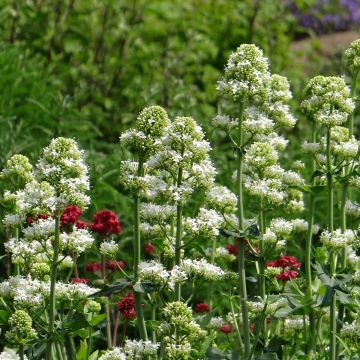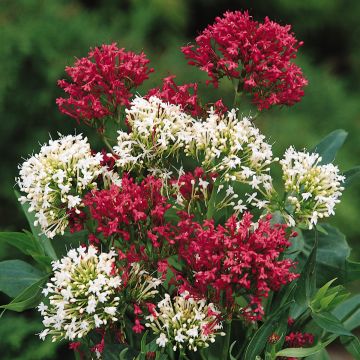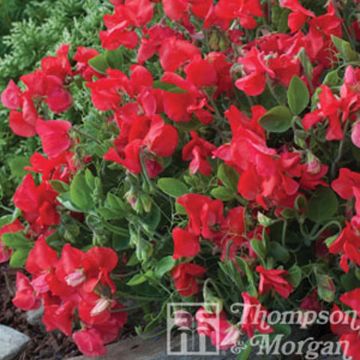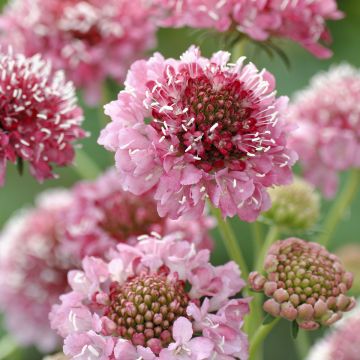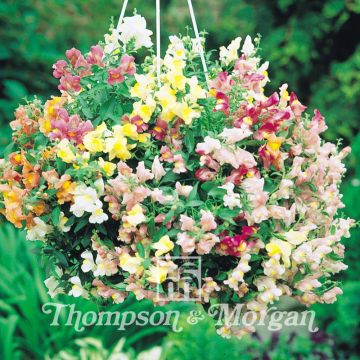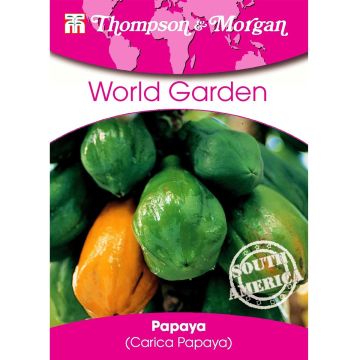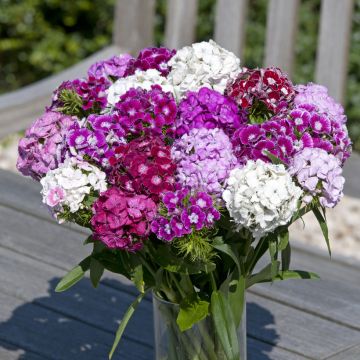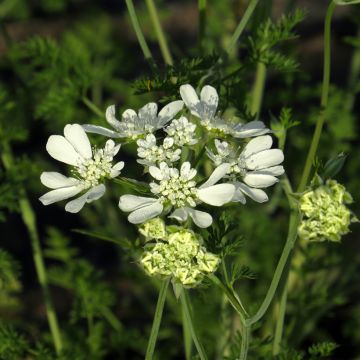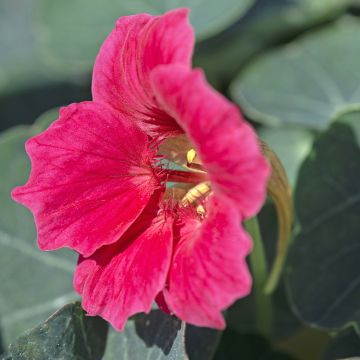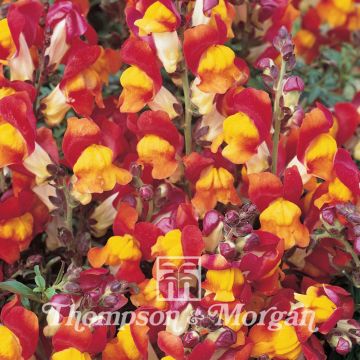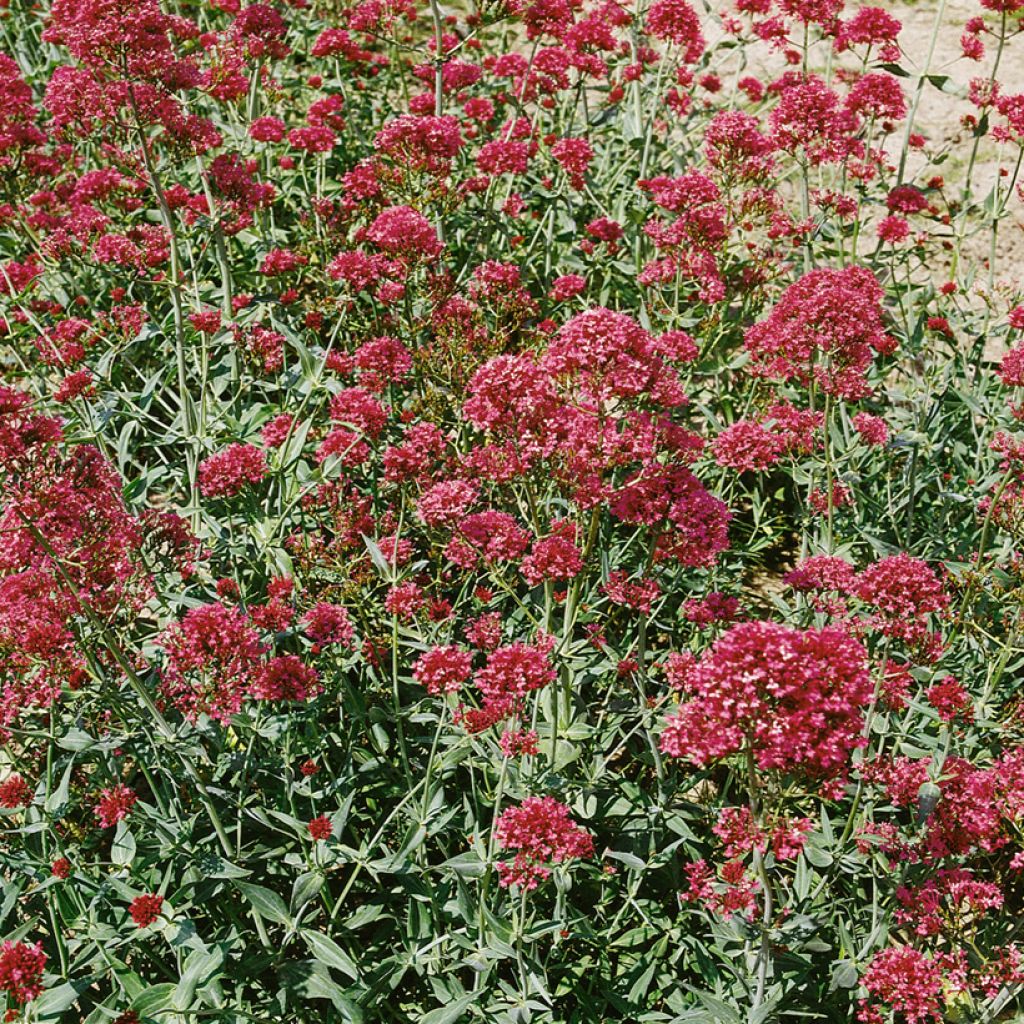

Centranthus ruber Pretty Betsy - seeds
Centranthus ruber Pretty Betsy - seeds
Centranthus ruber Pretty Betsy
Red Valerian- Jupiter's Beard
This item cannot be shipped to the selected country
Dispatch by letter from €3.90
More information
Schedule delivery date,
and select date in basket
This plant carries a 6 months recovery warranty
More information
We guarantee the quality of our plants for a full growing cycle, and will replace at our expense any plant that fails to recover under normal climatic and planting conditions.
Seed-only orders are dispatched by sealed envelope. The delivery charge for seed-only orders is €3.90.
Does this plant fit my garden?
Set up your Plantfit profile →
Description
Centranthus ruber 'Pretty Betsy' is a selection of Garden Valerian that stands out from the species by its flowers that are a pinkish-red colour. It is a robust perennial that forms a beautiful rounded clump and blooms enthusiastically, even in very dry soils in summer. Its flowering, which resembles small clusters of lilacs from a distance, attracts a multitude of butterflies. Almost foolproof, with the indescribable charm and untamed character of wild plants, it brings a lot of charm to flower beds and shrubs. It self-seeds freely, sometimes even in walls.
Native to southern Europe, North Africa, and Asia Minor, Garden Valerian has recently been classified as a member of the Caprifoliaceae family and not the Valerianaceae family. Unlike typical valerians, its tiny flowers have a long arched spur, which serves as a nectar reserve for butterflies. It is a herbaceous perennial with a strong woody base, anchored by rhizomes. It grows in a bushy, upright and spreading clump, reaching an average height of 70 cm (27.6 inches) with a diameter of 50 cm (19.7 inches), depending on the growing conditions (it is often taller in fertile soil). The clump is composed of hollow and fleshy, brittle stems covered with a bloom. They bear small deciduous to semi-evergreen leaves, depending on the climate. They are thick and fleshy, jade green to glaucous green. Sheathing towards the top of the plant, they are petiolate towards the base of the clump and are oval to lanceolate in shape. Their dimensions do not exceed 2 to 4 cm (0.8 to 1.6 inches) in length and 1.2 cm (0.5 inches) in width. The flowering period extends, depending on the region, from May to September-October, sometimes almost all year round in very mild climates. In the 'Pretty Betsy' variety, the tiny, pink-red flowers are grouped in branched clusters and are borne on the upper part of the stems, above the foliage. They are very nectar-rich. Note that this perennial will live longer in dry and poor soil. It self-seeds spontaneously in light soils.
Centranthus ruber 'Pretty Betsy', like rose campions, gauras, and Erigeron karvinskianus, is one of those nearly foolproof perennials that deserve a place in every garden. Very floriferous and not demanding about the type of soil as long as it is well-drained, centranthus plants freely evolve in a garden, filling in the empty spaces between perennials or shrubs. They even grow spontaneously in wall crevices. These perennials bring a lot of lightness to flower beds and are very useful for quickly filling a poor slope or a brand new garden. They are excellent plants for dry or Mediterranean gardens which can lack flowers in summer. Varieties with white, pink, mauve, or red flowers can be combined to create beautiful colourful masses. They can also be paired with spurges for dry terrain, cornflowers, poppies, Damask nigellas, and many others.
Report an error about the product description
Flowering
Foliage
Plant habit
Botanical data
Centranthus
ruber
Pretty Betsy
Valerianaceae (Caprifoliaceae)
Red Valerian- Jupiter's Beard
Cultivar or hybrid
Other Centranthus seeds
Planting and care
Sow Valerian from March to June in a seed tray. Use good quality potting soil. Sow your seeds by broadcasting them. Cover the seeds by sprinkling soil or vermiculite on top, lightly press down, and water thoroughly with a fine mist. Place your seed tray in a well-lit area, without direct sunlight, at a temperature of 18°C to 20°C.
The seeds will germinate in 21 to 30 days. Once the seedlings reach a height of 5 cm, transplant them into pots. 15 days before their final placement, start gradually acclimatising them to a temperature of 15°C.
By the end of May or early June, the temperature in the garden will be warm enough to plant your young plants. Choose a sunny location with well-drained soil. Space your plants 30 cm apart.
Regularly remove faded flowers to promote continuous flowering.
In warm climates, you can sow directly in the ground in late summer or early autumn.
Sowing period
Intended location
This item has not been reviewed yet - be the first to leave a review about it.
Flower seeds
Haven't found what you were looking for?
Hardiness is the lowest winter temperature a plant can endure without suffering serious damage or even dying. However, hardiness is affected by location (a sheltered area, such as a patio), protection (winter cover) and soil type (hardiness is improved by well-drained soil).

Photo Sharing Terms & Conditions
In order to encourage gardeners to interact and share their experiences, Promesse de fleurs offers various media enabling content to be uploaded onto its Site - in particular via the ‘Photo sharing’ module.
The User agrees to refrain from:
- Posting any content that is illegal, prejudicial, insulting, racist, inciteful to hatred, revisionist, contrary to public decency, that infringes on privacy or on the privacy rights of third parties, in particular the publicity rights of persons and goods, intellectual property rights, or the right to privacy.
- Submitting content on behalf of a third party;
- Impersonate the identity of a third party and/or publish any personal information about a third party;
In general, the User undertakes to refrain from any unethical behaviour.
All Content (in particular text, comments, files, images, photos, videos, creative works, etc.), which may be subject to property or intellectual property rights, image or other private rights, shall remain the property of the User, subject to the limited rights granted by the terms of the licence granted by Promesse de fleurs as stated below. Users are at liberty to publish or not to publish such Content on the Site, notably via the ‘Photo Sharing’ facility, and accept that this Content shall be made public and freely accessible, notably on the Internet.
Users further acknowledge, undertake to have ,and guarantee that they hold all necessary rights and permissions to publish such material on the Site, in particular with regard to the legislation in force pertaining to any privacy, property, intellectual property, image, or contractual rights, or rights of any other nature. By publishing such Content on the Site, Users acknowledge accepting full liability as publishers of the Content within the meaning of the law, and grant Promesse de fleurs, free of charge, an inclusive, worldwide licence for the said Content for the entire duration of its publication, including all reproduction, representation, up/downloading, displaying, performing, transmission, and storage rights.
Users also grant permission for their name to be linked to the Content and accept that this link may not always be made available.
By engaging in posting material, Users consent to their Content becoming automatically accessible on the Internet, in particular on other sites and/or blogs and/or web pages of the Promesse de fleurs site, including in particular social pages and the Promesse de fleurs catalogue.
Users may secure the removal of entrusted content free of charge by issuing a simple request via our contact form.
The flowering period indicated on our website applies to countries and regions located in USDA zone 8 (France, the United Kingdom, Ireland, the Netherlands, etc.)
It will vary according to where you live:
- In zones 9 to 10 (Italy, Spain, Greece, etc.), flowering will occur about 2 to 4 weeks earlier.
- In zones 6 to 7 (Germany, Poland, Slovenia, and lower mountainous regions), flowering will be delayed by 2 to 3 weeks.
- In zone 5 (Central Europe, Scandinavia), blooming will be delayed by 3 to 5 weeks.
In temperate climates, pruning of spring-flowering shrubs (forsythia, spireas, etc.) should be done just after flowering.
Pruning of summer-flowering shrubs (Indian Lilac, Perovskia, etc.) can be done in winter or spring.
In cold regions as well as with frost-sensitive plants, avoid pruning too early when severe frosts may still occur.
The planting period indicated on our website applies to countries and regions located in USDA zone 8 (France, United Kingdom, Ireland, Netherlands).
It will vary according to where you live:
- In Mediterranean zones (Marseille, Madrid, Milan, etc.), autumn and winter are the best planting periods.
- In continental zones (Strasbourg, Munich, Vienna, etc.), delay planting by 2 to 3 weeks in spring and bring it forward by 2 to 4 weeks in autumn.
- In mountainous regions (the Alps, Pyrenees, Carpathians, etc.), it is best to plant in late spring (May-June) or late summer (August-September).
The harvesting period indicated on our website applies to countries and regions in USDA zone 8 (France, England, Ireland, the Netherlands).
In colder areas (Scandinavia, Poland, Austria...) fruit and vegetable harvests are likely to be delayed by 3-4 weeks.
In warmer areas (Italy, Spain, Greece, etc.), harvesting will probably take place earlier, depending on weather conditions.
The sowing periods indicated on our website apply to countries and regions within USDA Zone 8 (France, UK, Ireland, Netherlands).
In colder areas (Scandinavia, Poland, Austria...), delay any outdoor sowing by 3-4 weeks, or sow under glass.
In warmer climes (Italy, Spain, Greece, etc.), bring outdoor sowing forward by a few weeks.

































